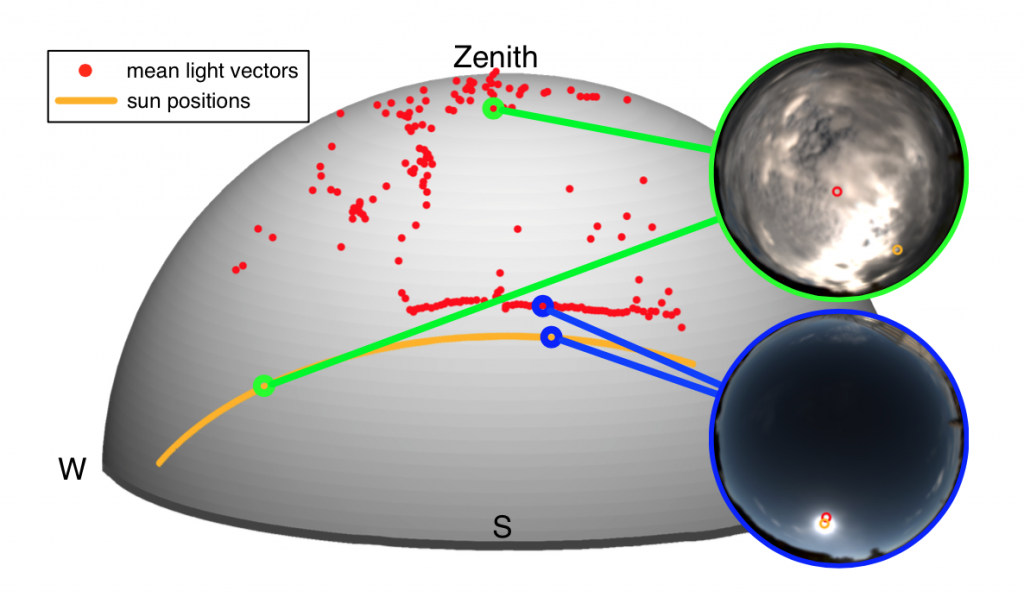Abstract

Photometric Stereo has been explored extensively in laboratory conditions since its inception. Recently, attempts have been made at applying this technique under natural outdoor lighting. Outdoor photometric stereo presents additional challenges as one does not have control over illumination anymore. In this paper, we explore the stability of surface normals reconstructed outdoors. We present a data-driven analysis based on a large database of outdoor HDR environment maps. Given a sequence of object images and corresponding sky maps captured in a single day, we investigate natural factors that impact the uncertainty in the estimated surface normals. Quantitative evidence reveals strong dependencies between expected accuracy and the normal orientation, cloud coverage, and sun elevation. In particular, we show that partially cloudy days yield greater accuracy than sunny days with clear skies; furthermore, high sun elevation—recommended in previous work—is in fact not necessarily optimal when taking more elaborate illumination models into account.
Copyright Notice
The documents contained in these directories are included by the contributing authors as a means to ensure timely dissemination of scholarly and technical work on a non-commercial basis. Copyright and all rights therein are maintained by the authors or by other copyright holders, notwithstanding that they have offered their works here electronically. It is understood that all persons copying this information will adhere to the terms and constraints invoked by each author’s copyright. These works may not be reposted without the explicit permission of the copyright holder.